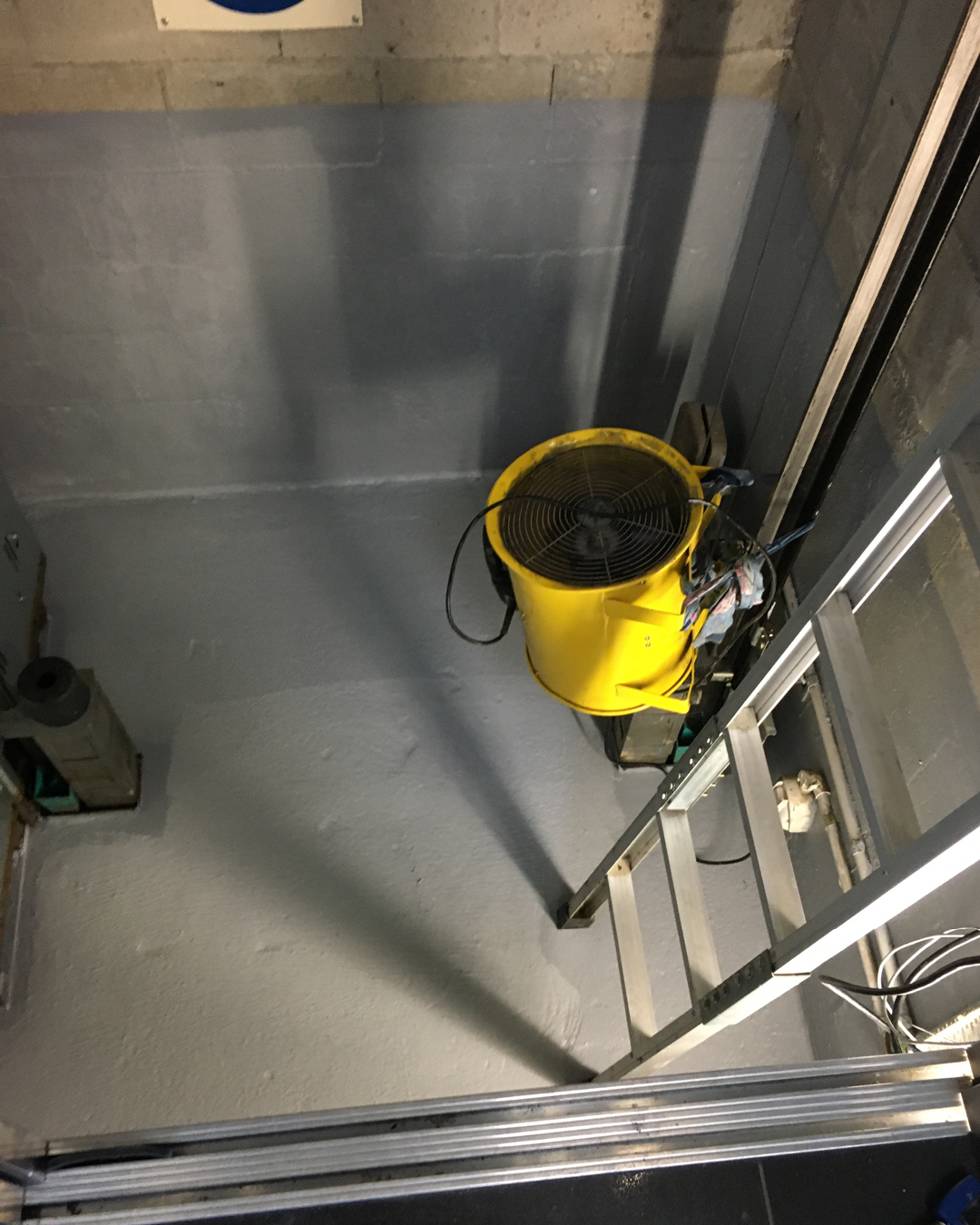Water in a lift pit or shaft is a common issue in many parts of the world not just Australia. Over the years we have noticed that particularly in areas with high rainfall such as coastal regions, parts of Queensland, and northern New South Wales, water ingress in lift shafts can be more frequent.
In cities like Sydney, Melbourne, and Brisbane, heavy seasonal rains or tropical storms, which occur particularly in the summer months can result in significant water issues if drainage systems are not properly maintained or the lift pit is not well-sealed.
In urban areas with many high-rise buildings and Subterranean Developments, lift pits are typically situated below ground level or in basements, which increases the likelihood of water intrusion, especially if there are issues with groundwater or drainage.
Why Are Lift Pits Vulnerable to Water Leaks?
Lift pits are usually located below ground level, which makes them prone to water ingress. There are a few reasons as to why water might be leaking into a lift pit:
Rising Groundwater
After heavy rain, the water table rises and seeps into the pit, especially during the wet season or in areas with poor drainage.
Cracks or Damage
Cracks in the floor or walls of the lift shaft can allow water to leak in. Older buildings, or those with outdated waterproofing, are particularly at risk.
Drainage Issues
Blocked or overloaded storm drains during rainfall can cause water to back up into the lift pit.
Building Movement
Shifts in the building’s foundation over time can create small gaps where water can enter.

What Are the Risks of Water Ingress in a Lift Pit?
Water in a lift shaft isn’t just inconvenient, it can lead to serious safety and operational issues:
Lift Malfunctions
Water can damage the lift’s electrical system and mechanical parts, leading to breakdowns or even complete failure. If water gets into the electrical components, it can pose a major safety risk, like electrical shorts or fires.
Corrosion
Continuous exposure to water can cause essential lift parts, such as cables and motors, to corrode over time. This can lead to expensive repairs or even the need for a full lift replacement.
Health and Safety Risks
Stagnant water can create slip hazards and lead to mould or bacteria growth in the pit, which is dangerous for maintenance workers.
Lift Downtime
When the lift isn’t working properly, it can disrupt daily operations, especially in high-rise buildings. Having an out-of-service lift can be a major inconvenience for tenants and staff.

Why You Should Fix a Leaking Lift Pit Immediately
Leaving the problem unchecked can escalate into major structural and safety issues. Here’s why acting early matters:
Safety First
Minimise electrical hazards and corrosion risks. Water exposure can create electrical hazards, cause corrosion, and make the pit unsafe for technicians. Fixing the leak protects everyone who works in or around the lift.
Reduce Costs
The longer you leave a water leak, the more damage it can do to the lift and the surrounding structure. Early repairs mean less costly fixes in the future.
Keep Your Lift Running
A dry lift pit ensures that your lift system stays in top condition, avoiding unexpected breakdowns and ensuring smooth operation.
Prevent Structural Damage
A wet lift pit can lead to structural damage over time. Stopping water ingress now helps protect the integrity of your building in the long run.
Our Solution: SNSeal Injectable Sealant & Membrane
At Stop & Seal, we deliver comprehensive waterproofing solutions to stop water leaking into lift pits, quickly, effectively, and with long-lasting results.
Below is an outline of steps we take to address water ingress in lift shafts:
Step 1: Assess the Issue
We begin by identifying where the water is coming from and how extensive the damage is.
These images are a typical example of what we encounter, water pooling at the base, often due to groundwater ingress, cracks, or drainage issues.


Step 2: Injection of SNSeal Injectable Sealant:
Our team injects SNSeal Injectable Sealant into cracks, joints, and weak points to stop active leaks and prevent future water ingress.


Step 3: Membrane System for Extra Protection:
In severe cases, we recommend a full membrane system installation to ensure long-term protection.


Our goal is to get a lift pit dry and safe again with minimal downtime. To avoid major disruptions we make the process as quick and hassle-free as possible. Our team of expert waterproofers know exactly how to handle lift pit leaks efficiently, ensuring long-lasting, high-quality results.
Waterproofing Service Areas:
Australia-Wide, Key Areas include Queensland, Victoria & New South Wales

We provide waterproofing services Australia-wide, with our head office based on the Gold Coast. Our expert waterproofing solutions cover:
Queensland, including key service areas in Brisbane such as but not limited to Brisbane CBD, Fortitude Valley, Spring Hill, and West End, as well as Gold Coast areas like Southport, Surfers Paradise, Burleigh Heads, Coomera, Robina, and Tweed Heads. From injection waterproofing to membrane waterproofing, we offer a range of reliable solutions for both residential and commercial properties.
Victoria, we provide professional waterproofing services in Melbourne and surrounding areas, including but not limited to Melbourne CBD, Southbank, St Kilda, and Docklands. We also service other parts of Victoria, offering membrane waterproofing and other high-quality waterproofing solutions across regions such as Geelong, Werribee, Ballarat, and beyond. Our injection waterproofing methods ensure long-lasting protection for your property.
New South Wales, Our NSW Metro franchise is available to assist with all your waterproofing needs. From injection waterproofing to membrane waterproofing, we have the expertise to solve a wide range of waterproofing problems. You can reach our NSW Metro franchise directly at [email protected] or 0418 830 860.
Need Help With a Leaking Lift Pit?
Waterproofing your lift shaft protects your building, your lift system, and the people who rely on it every day.
Contact Stop & Seal today and let us provide a tailored, long-lasting waterproofing solution for your site.
